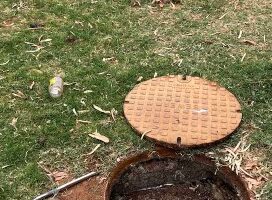
A closer look at the ASFA numbers tells the story. Most of the growth in retiree numbers over the past decade has come from people aged 70 and over, while the number of Australians retiring before 60 has steadily declined since the late 1990s.
Loading
ASFA’s analysis shows that fewer people are leaving work early, and more are retiring at 65 or later, particularly in their 70s. Some of this is simply demographics, with the baby boomer generation moving through, but it also reflects a clear behavioural shift.
Older Australians, especially women, are staying in the workforce longer than ever before. Two decades ago, women in their 60s rarely worked past retirement age; today, nearly half do. It’s a quiet revolution, reshaping what retirement looks like in Australia.
Financially, working a few more years, even part-time or casual, is one of the most powerful levers you can pull for more financial security. Every extra year of income gives your super more time to grow and means less years drawing it down at a higher pace.
And, the compounding effect of having more funds in your account for longer is enormous in this stage of life. Delay tapping your super for just two years, and you could have tens of thousands more saved and fewer years to stretch it across.
It’s also tax-smart. Once you hit 60 and give up a job, even briefly, you can move your super to the retirement phase and start drawing from it tax-free. And by 65, you don’t need to stop working at all; the rules let you access it tax-free either way.
Ceasing gainful employment once to meet the criteria, doesn’t mean you can’t keep working – it just means you can’t stay in the exact role you left to access your super. That means you can layer your salary and draw a tax-free income stream from your retirement phase superannuation account.
Then you can pay a little less tax, and put more into super in those years, maxing out your concessional contribution cap of $30,000 into super during this phase if you can afford to at just 15 per cent tax and let it compound longer in a low-tax environment.
Meanwhile, if you’re eligible for the age pension from 67, the income-free area for couples is now $380 a fortnight, or for singles $218, and the Work Bonus lets older Australians earn an extra $300 per fortnight each without reducing payments.
In short: a little part-time income goes a long way – allowing your super to compound longer and you to keep one foot in a workplace you might not be completely ready to leave.
And let me be clear, this isn’t about clocking in at a job you hate. It’s about creating flexibility, purpose, and a better way of using your retirement savings in the earliest stage of your retirement so you can live a longer, better quality of life.
Quitting work at 55 and going travelling in your caravan isn’t the goal for most modern retirees.Credit: Michele Mossop
Many Australians are reinventing work in their 60s – starting consultancies, freelancing, working in tourism, caring or community roles, or pursuing creative projects that finally pay something back.
Some call it semi-retirement. I don’t think everyone is ready to embrace it as “retirement” though – preferring to live in a midlife transitional phase, enjoying a more carefree period while staying employed, but adjusting the structure of work in their life.
Working later also has huge emotional and cognitive benefits for those who get to choose. Staying socially and mentally active can delay cognitive decline and boost wellbeing. It turns out that working longer – if you’re doing something you enjoy – isn’t just good for your finances, it’s good for your health.
Loading
We have to give credit where it’s due. The real reason Aussies in their 50s and 60s and even their 70s today can consider taking a more flexible approach to working is because of superannuation. It’s the quiet hero behind this shift.
For the first time, Australians are entering retirement with enough super to give them real choices – if they dare to learn how to use it. A comfortable retirement now costs around $75,000 a year for a couple or $53,000 for a single person.
And for the first time, more than 30 per cent of Australians are retiring with the capacity to fund that level of lifestyle, a figure ASFA expects will rise to around 50 per cent by 2050 as the system matures.
The beauty of super, once you reach the retirement phase, is its flexibility. Some people use a transition-to-retirement strategy to access tax-free income; others move straight into a tax-free drawdown phase.
Either way, that access to an income stream allows you to scale back work without sacrificing income. It’s the foundation that makes a slower, softer exit from the workforce not just possible but financially smart.
So forget the old formula of “work hard, retire early, hope it’s enough”. The new version looks more like this: work smarter + ease out of the workforce gradually + enjoy your life sooner. Because the real goal isn’t to stop working early – it’s to stop working for necessity, and start working for joy.
After all, my definition of retirement is this: it’s the moment you stop trading time for money, and start trading it for happiness, fulfilment and purpose.
Bec Wilson is author of the bestseller How to Have an Epic Retirement and the newly released Prime Time: 27 Lessons for the New Midlife. She writes a weekly newsletter at epicretirement.net and hosts the Prime Time podcast.
Advice given in this article is general in nature and is not intended to influence readers’ decisions about investing or financial products. They should always seek their own professional advice that considers their own personal circumstances before making financial decisions.
Expert tips on how to save, invest and make the most of your money delivered to your inbox every Sunday. Sign up for our Real Money newsletter.





